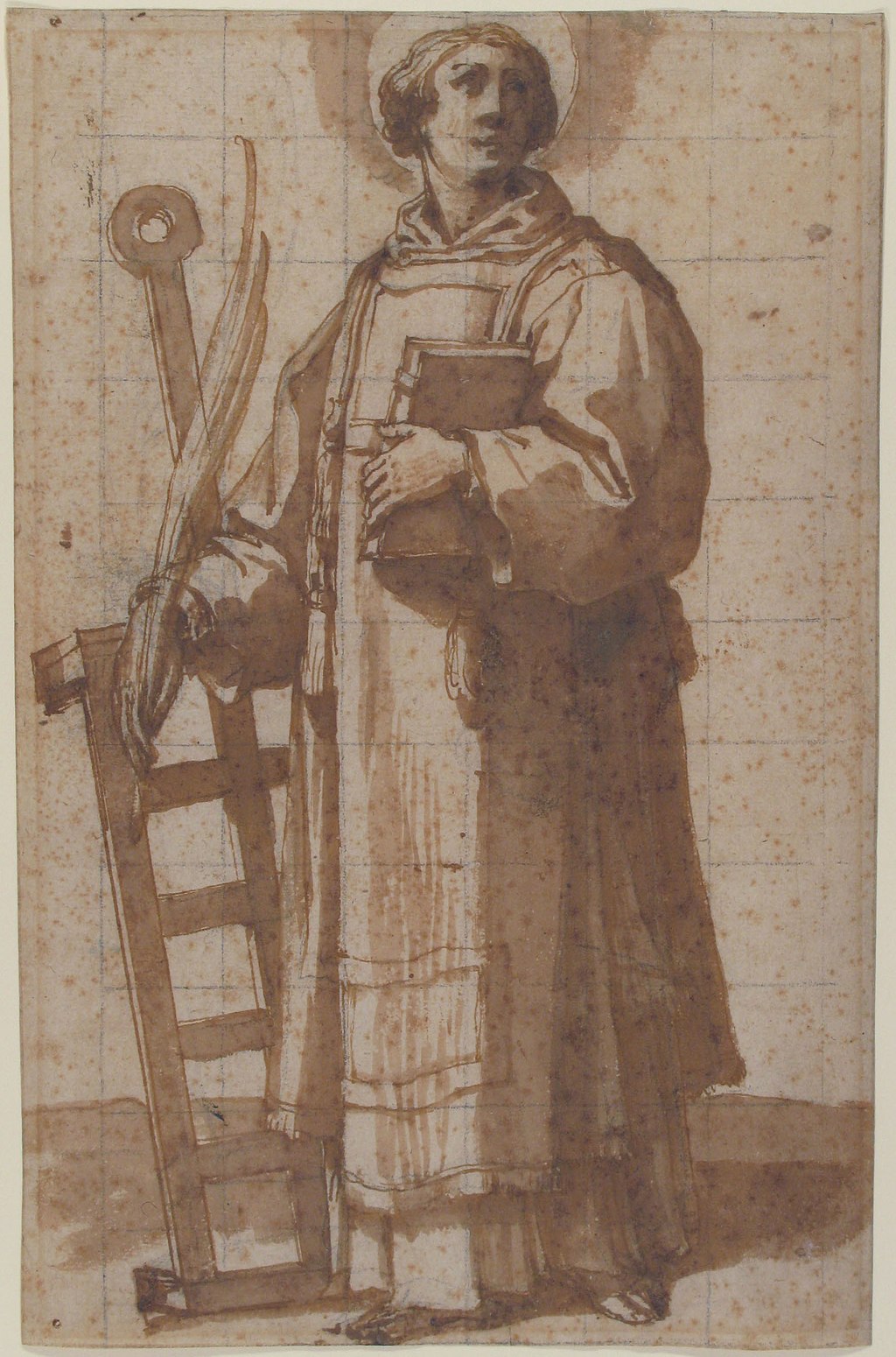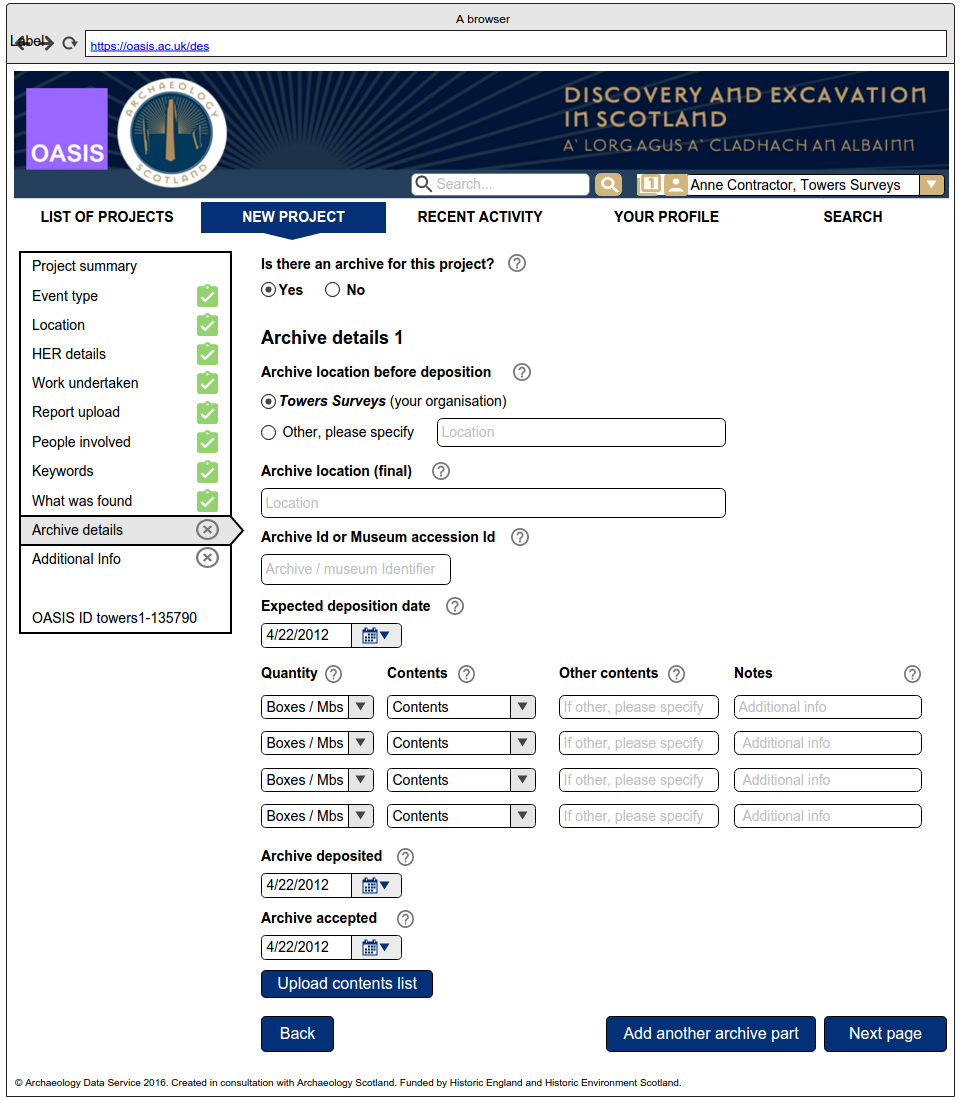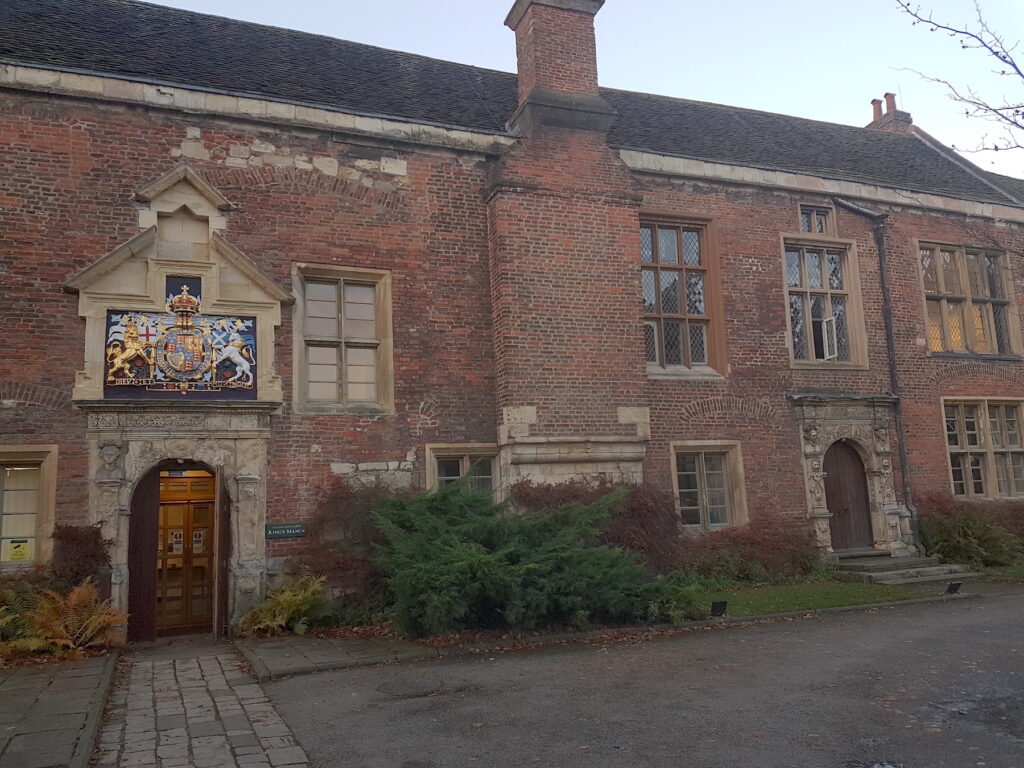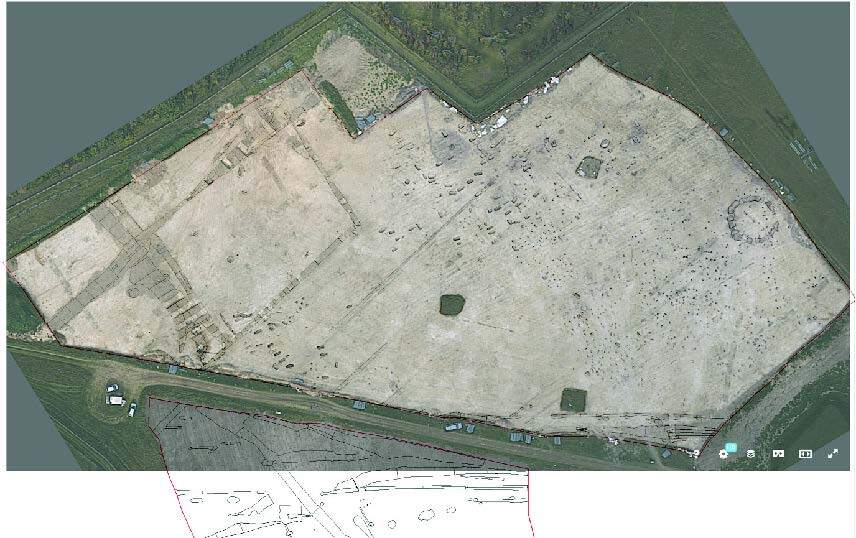
Over the last few weeks (ether side of Christmas) As part of the HERALD project we’ve been making some progress on the part of the new OASIS which records the archive. As an archival body ourselves we’re keen – along with everyone else I’ve spoken to – that the new system improves on:
- Recording what has been found/produced for archive
- Allowing an archival body to produce in-form guidance on what it expects from a deposition
- Making the archival body aware of events happening within their area/remit
- Allowing the archival body and data producer to correspond at an early stage
- Recording the deposition stage
- Reflecting the differences in archive workflows in England + Scotland.
- Signposting between physical and digital archives
One of the problems with the old OASIS was that records were often completed whilst the archive was still in flux. Looking over many records you can see cases where archive location is “TBC” or “Intending to send to…”. There’s also a inconsistency in naming the organisation, and a great deal of uncertainty in what people are recording is in the archive. It’s not all doom and gloom, there are some really good examples (everything neatly recorded, archive named, museum accession code in place) that show that the willingness to record the archive properly is in place among many archive users.
The first thing we can do to help is to have an OASIS form permanently open. So if the allocation and deposition of archive is on a separate timeline to the rest of the record (as often seems to be the case), then it’s a simple matter to have a user return and complete when things are sorted. That’s especially true in Scotland where (at the time of writing) the allocation of archives is decided via the Scottish Finds Allocation Panel as Treasure Trove – although people may have an idea of where things may be deposited based on past examples, the archive part of OASIS needs to stay live so that it can be updated where needed.
The other thing we’re doing is to have the curators involved (as much as possible) from the outset – archivists can create their own OASIS accounts, create their organisations, upload guidance on workflows, attach pro-forma and so on. This is a big step for OASIS to take. Historically OASIS has just been used for data producers, HERs and national bodies (a consequence of its origins as a simple event recording system). And while over the years we have created bespoke views for particular data consumers (where appropriate) it’s clear that for OASIS to truly succeed in it loftier aims for tying together all parts of the Historic Environment, it really has to get archivists engaged with the system.
So what functionality are we looking at introducing?
- Introduce workflows to incorporate what we’re calling Level 3 users (museums + archives)
- Ability for Level 3 to create guidance within the OASIS form on how the workflow operates in their area, if they’re accepting archives, sorts of archive they accept, online deposition forms etc
- The ability for a Level 3 user to set their geographic collecting area. This may be county based, regional even national.
- The ability for a Level 3 user to see things that may be coming or should be coming to them (based primarily on location)
- The ability for a Level 1 user (unit, academic, community group) to see the archives collecting in their area, and to check up on what’s expected
- The ability (via a section called archive notes) for a Level 3 user to correspond with a Level 1 user. This records any back and forth in the form allowing people to track what’s going on (see below)
The actual part of the form where archive contents are recorded is (hopefully) straightforward (see below for an impression). In this a Level 1 or Level 3 user can record:
- Where an archive is prior to deposition
- In Scotland, when the archive was sent to SFAP, and the decision of the Panel as to appropriate course of action.
- Where the archive was deposited
- The accession/archive ID
- The expected deposition date
- The date it was deposited
- If the archive was accepted or refused (including date)
- There’s also space for a contents list of pro-forma template if required by the archive.

And finally, what’s actually in the archive! This has been tricky…. In a review of the current OASIS system by FISH, the archive contents page and internal lists was noted as being a touch confusing, and understandably out of date. The recommendation for the new system is that as much as possible existing heritage thesauri are used. In-particular that the user can select:
- Material type from the FISH archaeological science thesaurus
- Artifact type from the FISH Archaeological Objects Thesaurus or Archaeological Objects Thesaurus (Scotland)
- And for building recording projects the option to select from the FISH Building Materials Thesaurus
However that still leaves the written, drawn and digital side… An initial list called ‘Paper and Digital Archive Component’ recording basic concepts such as, stratigraphic matrix, section drawing, photogrammetric model etc has been established courtesy of the Historic England’s DSU and reviewed by FISH. The list – to begin with – is deliberately simple, and there’s still plenty of time to review and propose additions to the list. As ever with a development project on a relatively short timeline – we want to get the basics working first.
The final piece of work has been to try and compile a list of archives, record offices and museums in England and Scotland. In order to:
- Map multiple terms used in the old OASIS to a single known entity
- Have a list of organisations + data ready to use in the next phase of testing.
To begin with we’ve compiled a list of museums maintained by the SMA (see https://doi.org/10.5284/1018089) along with the list of organisations listed by The National Archives. For each one – and where available – we’ve used details such as location, whether they’re collecting, website, collecting area and so on. Although very rough, this is enough to start planning and then testing these specific Level 3 workflows.
As ever, I’m very keen for specialists from this sector to be involved in reviewing what we’ve doing (in terms of the lists we’re drawing up), and to volunteer to test and feedback on the workflows. So if you are reading this, and happy to help then do please get in touch at the usual email address: herald@ads.ac.uk
This post was originally published on the OASIS Blog, for more HERALD project updates check out the OASIS Blog or sign up for notifications.





